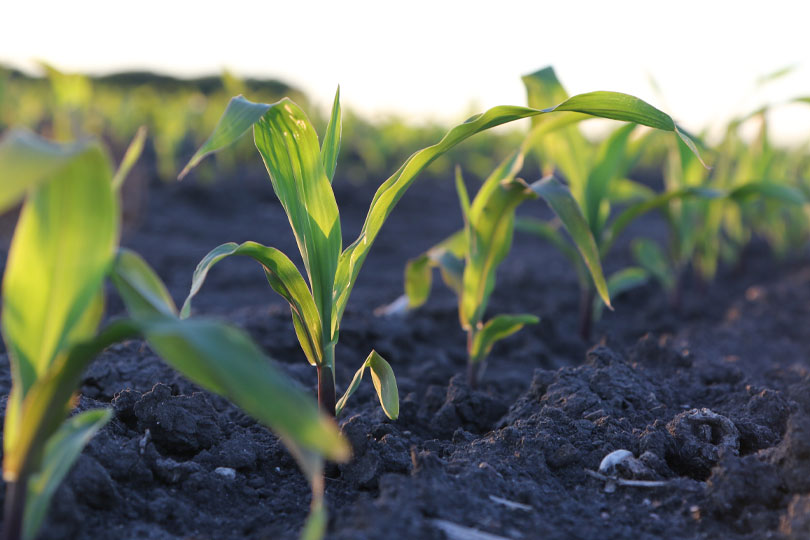By Jennifer Whitlock
Field Editor
Texas farmers are experiencing sticker shock as the price of fertilizer continues to climb. Already up as much as 200% year-over-year, the cost of fertilizing crops is expected to get even more expensive in 2022.
That’s the message Dr. Joe Outlaw, co-director of the Texas A&M University Agricultural and Food Policy Center (AFPC), delivered to farmers at the Blackland Income Growth Conference.
Although AFPC initially predicted a modest 10% increase in fertilizer prices in an August 2021 forecast, a mix of factors has since converged, causing the cost to rise astronomically.
In a report prepared at the request of Louisiana Rep. Julia Letlow, Outlaw and other AFPC agricultural economists noted product shortages and growing input costs will create a challenging environment for which the farm safety net is ill-prepared.
“Coupled with current COVID supply chain issues, this will further stress the production environment for agriculture across the country,” he said. “The current farm safety net is not designed to address these types of rapid production cost increases, which will continue to be a growing concern for farmers across the country, creating an emerging need for assistance.”
The largest whole-farm impact will fall on farmers who grow feedgrains, with an average of $128,000 in additional fertilizer costs, according to the AFPC report. Per acre, rice farmers will feel the biggest impact at $62.04 an acre.
Those figures are based on 64 AFPC representative farms located in Arkansas, Alabama, California, Colorado, Georgia, Iowa, Kansas, Louisiana, Mississippi, Missouri, Nebraska, North Carolina, Ohio, Oregon, South Carolina, Tennessee, Texas and Washington.
In a separate analysis requested by corn grower associations and checkoff programs representing 21 states, AFPC noted fertilizer costs and corn prices are positively correlated. Outlaw added any gains in corn prices are generally far outpaced by fertilizer cost increases.
The analysis found nitrogen prices are about 81% higher for the 2022 crop year than previous estimates, averaging $52.07 more per acre in nitrogen costs for corn farmers. Those farmers would need to see $0.32 more per bushel to offset the higher nitrogen price.
“We conducted a historical analysis going back to 1980 and found that fertilizer costs tend to go up when corn revenues increase,” he said. “Notably, these prices tend to go up exponentially even after accounting for natural gas prices and higher demand.”
Of the three primary nutrients in commercial fertilizer preparations, nitrogen accounts for more than 50% of total use by weight. The common refrain in the fertilizer industry that increases in the price of natural gas is the primary reason nitrogen products have gone up in cost is “highly suspect,” AFPC wrote.
Although anhydrous ammonia and natural gas prices do tend to move together, Outlaw and his co-authors said the $688-per-ton increase in anhydrous ammonia from the end of 2020 to October 2021 could not be attributed solely to a concurrent increase in natural gas.
The increase in the value of the embedded natural gas required to produce the anhydrous ammonia accounts for only $102, or 15%, of the nearly-$700 price jump, according to AFPC.
“Once the value of natural gas in a ton of AA has been subtracted from the AA price, the residual tends to closely track the price of corn, albeit on different scales. This close correspondence could be due to increased demand for nitrogen products as corn prices increase or could be due to the exercise of market power by nitrogen product manufacturers and extraction of economic rents from corn producers,” the authors wrote. “The intent of this brief analysis is to neither prove nor disprove either of those two explanations. But it does raise serious questions and certainly helps explain the frustration producers are feeling.”
Additionally, new antidumping and countervailing duty tariffs on urea ammonium nitrate (UAN) solutions, a prime material in nitrogen fertilizer, are expected to raise the prices for both domestically produced and imported nitrogen fertilizers by the same percentage as the tariffs, which have been preliminarily determined to range from 9.66-9.84%.


[…] Source link […]
The chemical company giants that manufacture fertilizers are a virtual monopoly, as are the few airlines, beverage companies, software and IT companies, etc. on down the line. They state they are raising prices due to increases in costs of materials, shipping, wages, supply side squeezes, but the they are increasing their prices to consumers because they have such a large market share that they
feel they can get away with it. Coke raised their soda prices. Pepsi followed suit. Cheers!
That going to Really hurt us bad